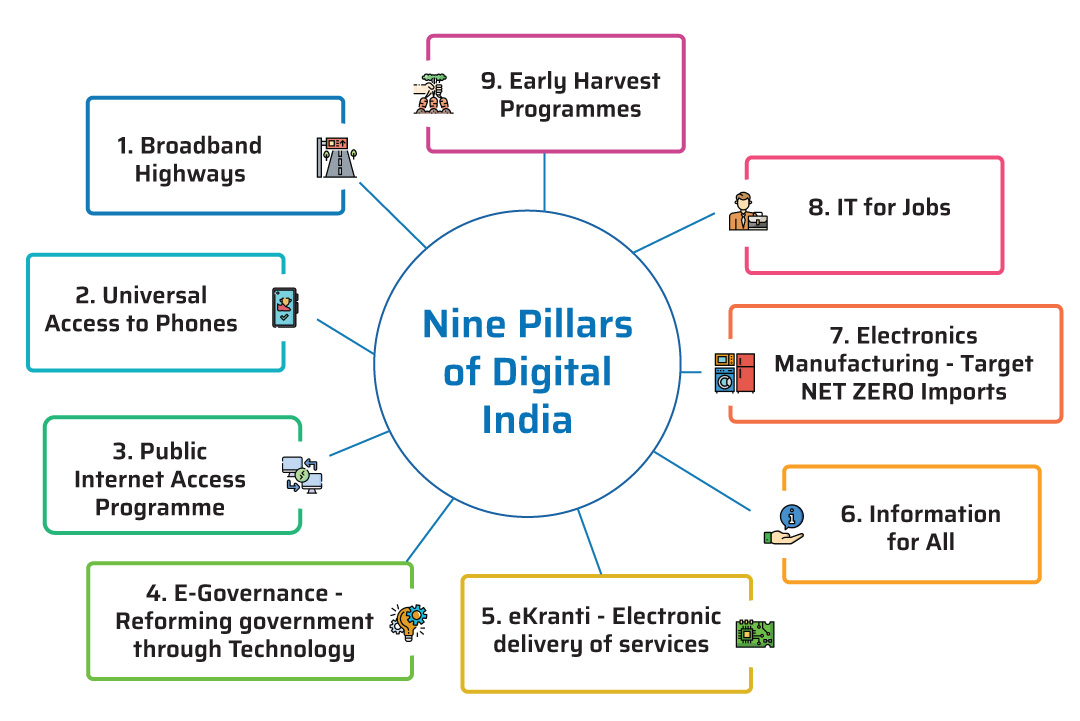Launched in 2015, Digital India Initiative (DII) is a flagship programme to transform India into a digitally empowered society and knowledge economy.
- It is an umbrella programme that covers multiple projects of various Central Ministries/Departments and States and Union Territories (UTs).

Key Features of Digital India Initiative
- Key Focus Areas:
- Digital Infrastructure as a Utility to Every Citizen
- Governance & Services on Demand
- Digital Empowerment of Citizens
- Pillars: Covers 9 pillars of growth areas (refer infographics).
- Implementation: Department of Electronics and Information Technology (DeitY) is a main coordination agency along with other ministries and monitoring committee (headed by Prime Minister).
- Initiative launched: Unified Mobile Application for New-age Governance (UMANG), DigiLocker etc.
Digital India Initiative has led to Ease of Living and transparency in country.
- Digital Public Infrastructure: Enabling a technology-led model for growth that is collaborative, equitable, and democratises opportunity.
- Financial Inclusion: Over 11 Crore farmers now receive money directly in their bank account.
- Over 137 Crore Aadhaar numbers generated.
- BharatNet: Under it, 6.83 lakh km of optical fibre network has been laid.
Key challenges faced by Initiative: Coordination Issues (Program covers many departments), Rural- urban digital divide, etc.



